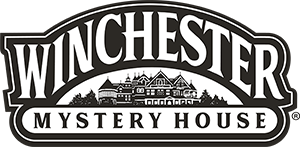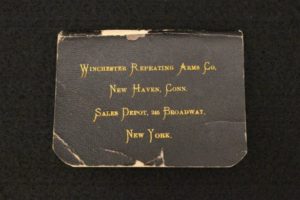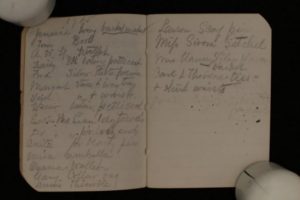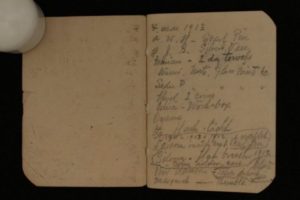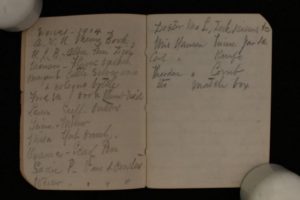Do you fall into the camp of those who think that Christmas traditions have been around forever? That gifts have been wrapped tidily beneath a fir tree twinkling with lights while tales of Ebenezer Scrooge are recounted?
If so, the following content may shock you. Reader discretion is advised.
The traditions of Christmas, including jingle bells, sleighs, reindeers, candy canes, and lit-up trees, are fairly new.
Another shocking fact: Sarah Lockwood Pardee, the mistress of Winchester Mystery House, was born before Rudolph. You know, that red-nose reindeer? That’s right. Although we can’t quite claim the young Sarah took her first breath before Santa (see timeline), we could make a strong case that she pre-dated the American image of him as a white-bearded man who resided in the North Pole, ho-ho-ho’ing through the frosty air.
Nobody was dreaming of a white Christmas—a song’s refrain made popular in the 1940s. No one was acting like a Scrooge till English author Charles Dickens published it—in the year 1843. Peace on Earth? Not so much. It would have to be found after the work day was over since technically Christmas wasn’t even a federal holiday till 1870.
Bah Humbug to a New Haven Victorian Christmas
Sure, December 25 has been a religious festivity since approximately the fourth century. But the accoutrements that we string, wrap, tie, and hang haven’t been.
In Sarah’s ancestral New Haven, Connecticut home, we can’t know for sure how the Pardees would have celebrated around 1840 when she was born. But since “Night Before Christmas” was published in 1823, we can presume Sarah would have been introduced to it by her four older siblings. And eventually she would have read Charles Dickens’ “A Christmas Carol,” espousing the Christian virtue of charity that some perceived was slowly fading as the industrial age pushed in.
A small evergreen might have stood on a table in the parlor, decorated with fruit, nuts and strings of popcorn or red berries. The Christmas tree was a phenomenon that began to hit American shores in the mid-1800s after the magazine Godey’s Lady’s Book published an engraving of Queen Victoria, Prince Albert and their children around a large tree decorated and lit by candles (later to be replaced by electric bulbs).
And toys …? Those creative pieces of plastic and other materials that kids write into their Santa wish list? Not really a thing till the late 19th century. And even then … made of cast-iron! Clunk.
One of the toy pioneers was Connecticut manufacturer J. & E. Stevens Company in the town of Cromwell—which is just 15 miles more or less from where the Pardees lived in New Haven.
Feliz Navidad
The widow’s move to the sunny lands of the Santa Clara Valley that, just four decades earlier, had been a Mexican territory known as Alta California would have been a pretty big switch: in weather, landscape, and in culture. The customs, however, had been imported by the many Easterners who have moved West in the 1800s. Nevertheless, the backdrop was different:
- Winter rains instead of snow
- Verdant green hills instead of brown ones blanketed in snow
- Mexican and Spanish influences versus British and Dutch
- Persimmons and dates instead of cranberries
- 60 degree weather instead of 10 degrees
Gilded walnuts and almonds as well as citrus hung from trees, as they were all readily available California crops. The Santa Clara Valley itself was a land of orchards and the 44-year-old widow planted her own orchard as part of her California vision. Which means that marmalades would have been a big part of the holiday table. Traditional puddings were also more popular than they are today, such as plum pudding for Christmas.
One last mystery related to Christmas. When exactly did we start abbreviating it to “Xmas?” Data shows it happened before 1913, as evidenced by Sarah Winchester’s “Xmas list” below.
Photo Credit: History San Jose – https://historysanjose.pastperfectonline.com/archive/9E2A0609-4DE3-49C0-8D67-793473201847
